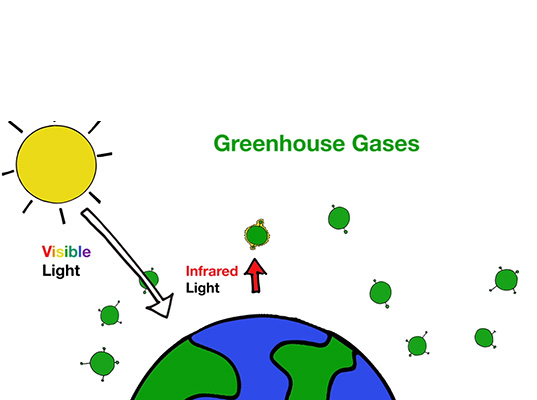True or False.
Air pollution

Methane emissions result from factory farming. Methane has a global warming potential 20 times higher than carbon dioxide. Besides methane emissions, the fossil fuels used in energy, transportatioion, and synthetic pesticides/fertilizers emit 90 million tons of carbon dioxide into the atmosphere every year. Factory Farming also releases harmful compounds, like hydrogen sulfide and ammonia, that can cause immediate negative health effects on humans.
Deforestation.

In the United States alone, over 260 million acres of forest have been cleared to make room for crop fields, most of which are used to exclusively grow livestock feed. This is not a practice that only occurs in the U.S., land clearing in Brazil to grow chicken feed is responsible for the destruction of rainforest. And these numbers only account for land cleared to feed animals. Clearing land to grow soybeans in the Amazon rainforest is responsible for the loss of 100 million hectares of forest, releasing enough carbon into the atmosphere to increase the rate of global warming by 50 percent.
Water pollution.

Industrial agriculture sucks up 70 percent of the world’s freshwater supplies. Water polluted with agricultural run-off can be toxic enough to destroy whole ecosystems. Industrial livestock farms contain massive cesspools that store animal waste. These “factory-farm lagoons” have been known to leak into adjacent waterways. When the water from factory farming containing animal waste gets into local waterways, the harmful compounds can cause toxic algae blooms and disease outbreaks.
Climate change.

Meat production is a major driver of climate change. Meat and dairy products have the highest global footprint of carbon, raw materials, and water per kilogramme of any food. In terms of greenhouse-gas emissions, livestock and fodder production each generate more than 3 billion tonnes of CO2 equivalent. Post-farm transport and processing account for only a tiny fraction of the emissions linked to food. By reducing food waste and our consumption of emission-intensive food products, we can contribute to cutting the greenhouse-gas emissions of agriculture.
Feedback
False
Factory Farming emissions contribute to climate change and spread diseases to living beings.
Feedback
True
Millions of acres of land are cleared up to make room for crops, which are used to feed animals.
Feedback
True
Factory Farming has a negative impact on global water resources.
Feedback
False
Before reaching our plates, our food is produced, stored, processed, packaged, transported, prepared, and served. At every stage, food provisioning releases greenhouse gases into the atmosphere.